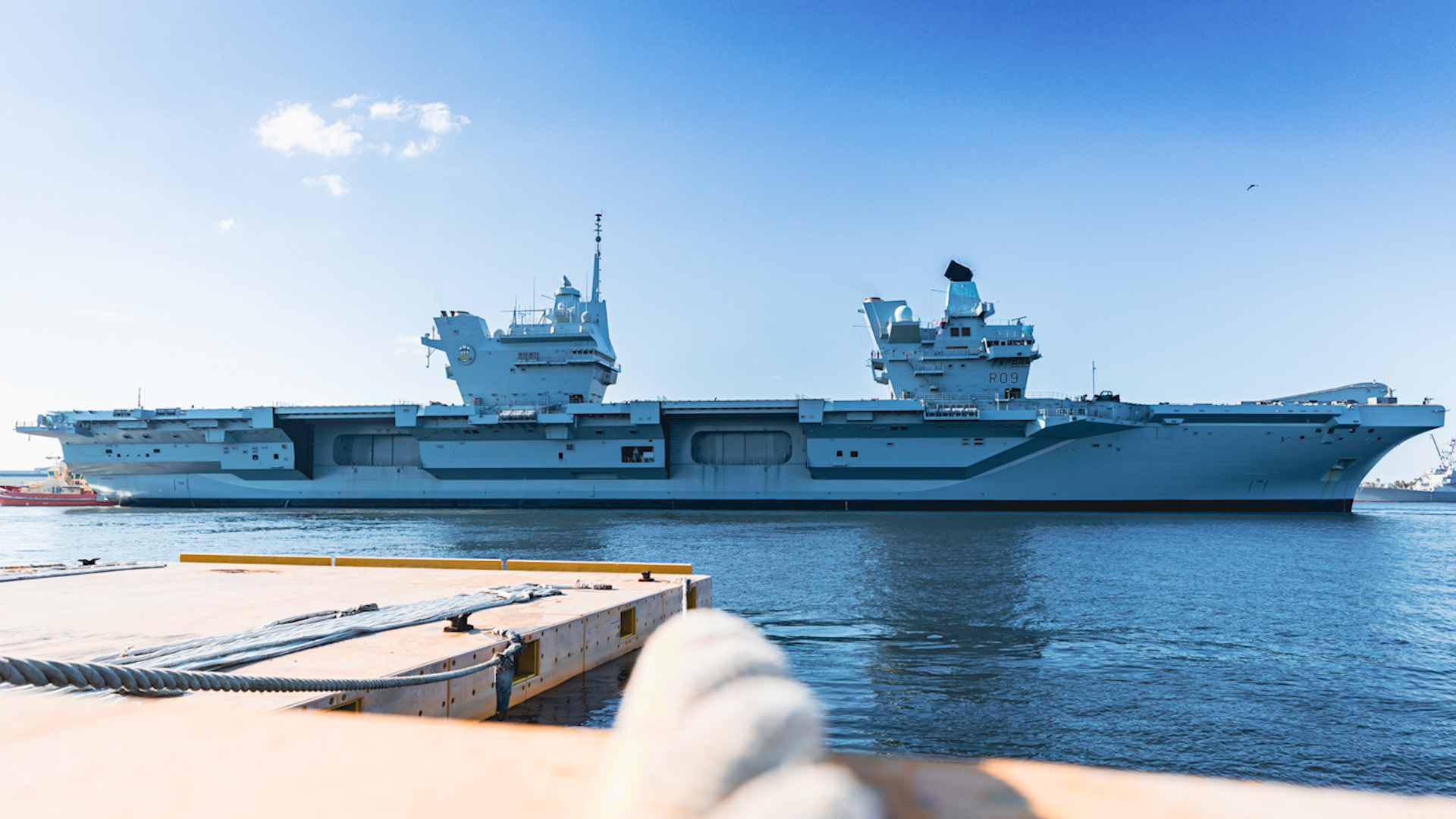
HMS Prince of Wales given warm American welcome upon arrival to Naval Station Norfolk

HMS Prince of Wales has been given a warm welcome to Norfolk, Virginia, as the vessel takes part in an autumn of trials off the US coast.
Britain's biggest warship is gearing up to support F-35 Lightning jet operations with its US allies.
The Royal Navy says the tests aim to push the operating limits of the stealth fighter and Queen Elizabeth-class carrier combination, increasing its punch and ability to carry out strike missions in ever-harsher weather conditions.
Upon its arrival in Norfolk, US Fleet Forces posted on social media: "We hope you feel at home here.
"The Royal and United States navies have always exemplified the essence of collaboration, underpinned by a long and well-established history."
Other airborne drills include maiden trials with a Mojove drone, which will be the Royal Navy's first foray into armed, uncrewed aircraft.
HMS Prince of Wales has also hosted US Marine Corps Bell AH-1Z Vipers, with the carrier posting video footage and pictures of the attack helicopters in action on social media.
In the video clip, the Vipers are seen taking off, hovering, and landing on the flight deck.
The carrier also worked with the US Marine Corps to host the MV-22 Osprey – a multi-engine, dual-piloted, tilt-rotor aircraft that can take off, hover and land like a helicopter but which can also rotate its propellers to a horizontal position and fly like an aeroplane.
The ship's company have carried out firefighting and crash exercises, moving Merlin and Wildcat helicopters around the flight deck, practising sea boat operations, self-defence exercises and undertaking a replenishment from US Military Sealift Command – the US Navy's counterpart of the UK's Royal Fleet Auxiliary.
The vessel departed Portsmouth in early September to go on deployment.









